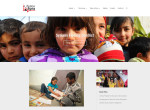 John was a founding member of Lifeline Syria (lifelinesyria.ca) a group which is encouraging Toronto residents ( and other Canadians) to sponsor Syria refugees in Canada. John was mayor of Toronto when the Boat People –refugees from Vietnam, Laos and Cambodia were welcomed – more than 60,000 to Canada, of which more than 20,000 came to Toronto. Why not see the same thing happen to Syria refugees?
John was a founding member of Lifeline Syria (lifelinesyria.ca) a group which is encouraging Toronto residents ( and other Canadians) to sponsor Syria refugees in Canada. John was mayor of Toronto when the Boat People –refugees from Vietnam, Laos and Cambodia were welcomed – more than 60,000 to Canada, of which more than 20,000 came to Toronto. Why not see the same thing happen to Syria refugees?
The idea for the initiative came form an experience John had in Oswego, New York, in 2014, as he wrote in an article published in the Toronto Star in October 2014:
Oswego’s example and Syrian refugees
The small City of Oswego, at the south east corner of Lake Ontario in New York State, is hardly top of mind in a place like Toronto. But it is where a social experiment took place in the 1940s that Toronto should replicate today.
The Second World War was still raging on in 1944, although victory for the Allies now seemed possible. Stories of the horrors the Nazis had inflicted on Jews had become more familiar, and American President Franklin Roosevelt thought some gesture was needed to reach out to European Jews. An assistant was sent to Italy – the Allies now controlled much of the Italian boot – to find 1000 war refugees who might be offered refuge in the States. Emphasis was placed on finding families, particularly those who had escaped from cruel prison, and of the 3000 individuals who expressed an interest, places on ships were found for 982 people to come to America.
Accommodation for the families was found in decommissioned military barracks that played a leading role in the War of the 1812, Fort Ontario in Oswego, and the barracks were renovated to house the families. This was the only refugee camp in the States during the Second World War, and the 982 individuals had no official status in America: they were admitted simply as guests of the President and his wife Eleanor Roosevelt. The assumption was that they would return to Europe once the war was over.
But the good folks of Oswego took to these refugees. The children went to local schools. Local residents provided food for the refugees. A synagogue was built so the refugees could worship. They were made to feel welcome.
As the war ended, all but a few individuals said they wanted to remain in America, but the promise had been made that as guests of the President they would have to return to Europe. A neat device was found to get around this legal roadblock: if they applied from some other country then their application for immigrant status could be considered. An arrangement was made with Canadian authorities.
Families were taken by bus to the Rainbow Bridge over the Niagara River in the morning. They walked to the Canadian side, were welcomed by Canadian officials, and filled in applications for permanent entry to United States. American officials immediately reviewed the applications and gave them their blessing. The families then walked back across the bridge, and the buses returned them to Oswego that evening where they began their new lives.
It is a story of responding with compassion to an otherwise hopeless situation, and then bending the rules, both Canadian and American, in the name of social justice. The Safe Haven Museum and Education Centre in Oswego commemorates this incident.
Toronto should learn from Oswego’s example of 70 years ago. City Hall should immediately agree to host one thousand families of Syrian refugees, and seek the support of Torontonians to give them good welcome and provide support. We can work out the legalities later, once they are safely here in our city. “
Readers are encouraged to go to the web site, lifelinesyria.ca, and volunteer to become a sponsor of a Syrian family.
